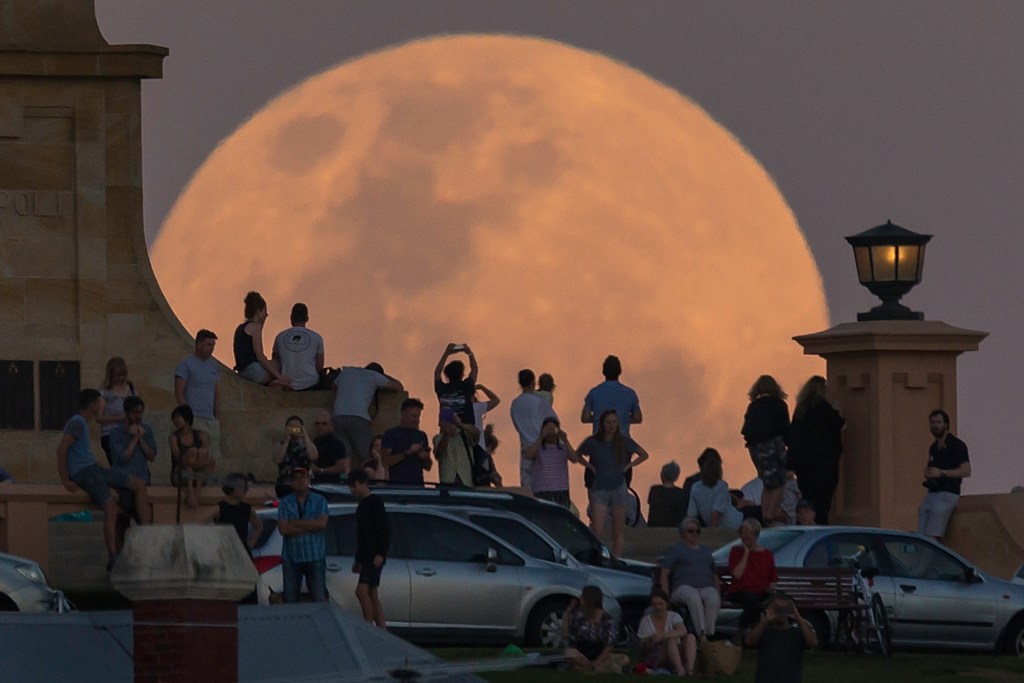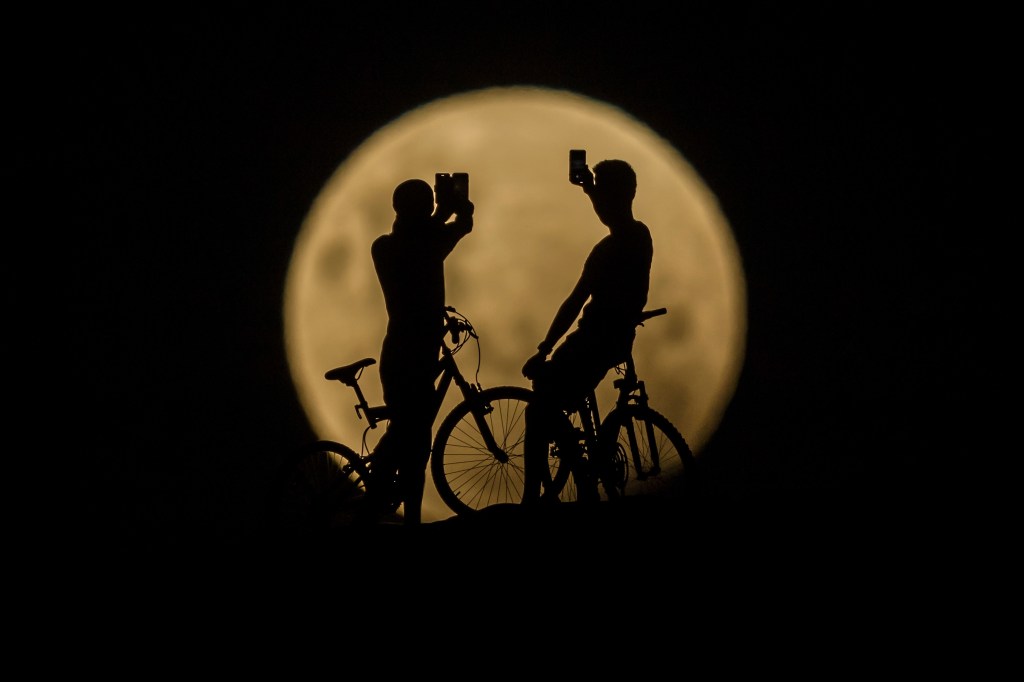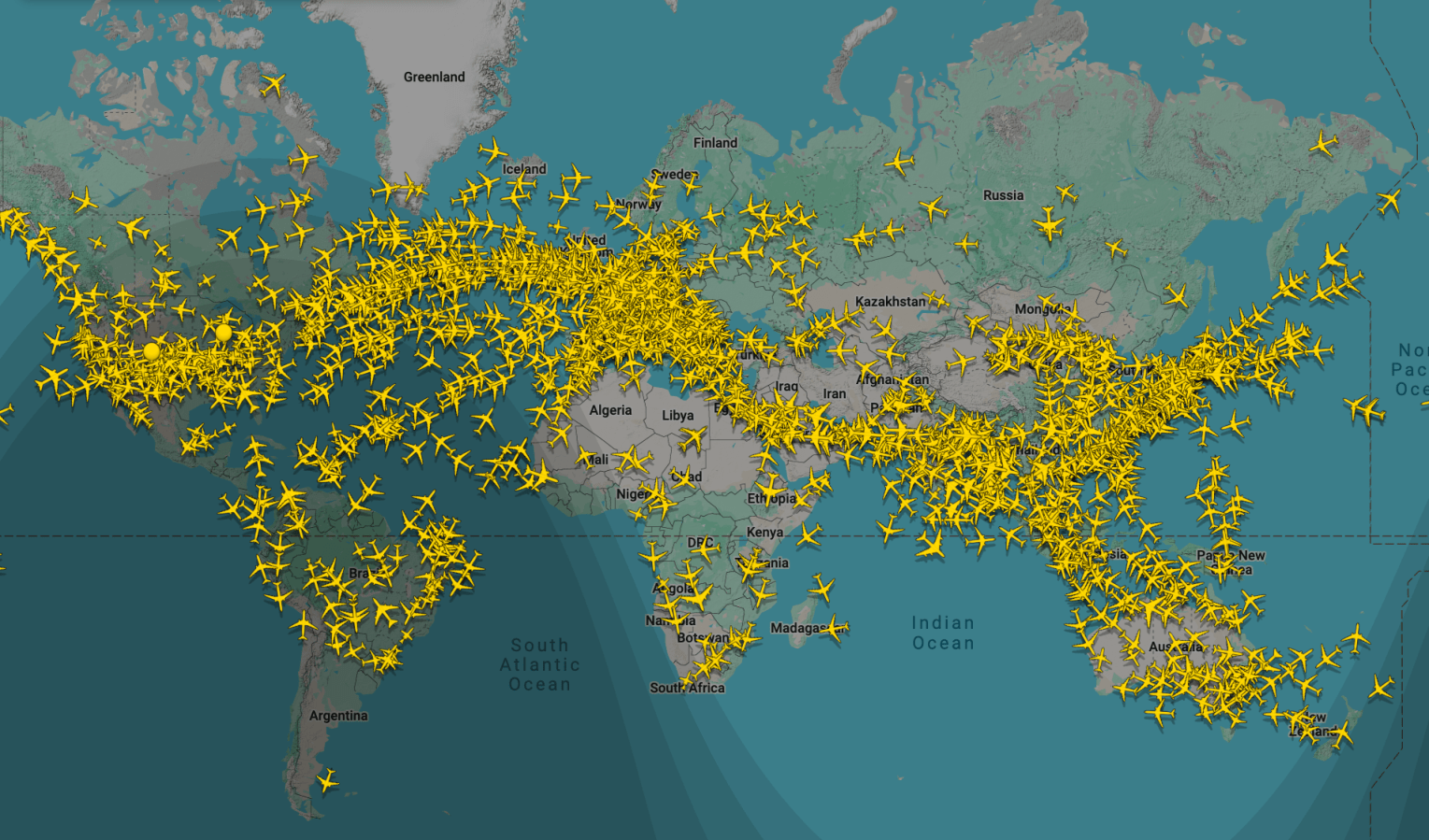Two relatively rare lunar events will be occurring at the same time over Australia on Wednesday and Thursday night, making the super blue moon the perfect opportunity to get outside and enjoy the night sky.

What is a blue moon?
In a rare lunar event, the full moon will be both a blue moon and a super moon. This is an infrequent occurrence, with the next super blue moon not set to appear until 2037, according to NASA.
First off, it is important to know that a blue moon doesn’t refer to the literal colour of the moon.
A blue moon comes around roughly once every 2.7 years and refers to the instance where a second full moon occurs in a single month.
While historically there have been other definitions of a blue moon, this is understood to be the widely accepted version.
The lunar cycle is around 29.5 days, so the occurrence of a blue moon is inevitable but not too common – our last was almost exactly two years ago.
While a blue moon is technically like all other full moons except for where it lands in the calendar month, a supermoon has physical qualities that set it apart.

What is a supermoon?
Supermoons occur when the full moon lands on or around the Earth and the moon’s closest point to each other in the lunar cycle.
The moon orbits the Earth in a shape that more closely resembles an ellipse than a circle, meaning it has points where it is further away and points where it is closer to the Earth.
We have already had two supermoons this year, but this one is set to be the closest to Earth in 2023 and is made extra special by the fact that it coincides with a blue moon.
According to NASA, the moon is usually – on average – a distance of 384,400 km away. When this supermoon turns full it will be only 357,344 km from Earth. Supermoons can also appear up to 14% larger than a regular full moon.
Both full moons this month were supermoons, and after this Thursday there is one more supermoon set to occur this year on September 29.
When is the best time to see the supermoon?
Even though it won’t exactly be at its zenith during the super blue moon, the optimal viewing opportunity will be this evening. The moon will start its ascent from 4:30pm AEST, and from 5:30pm, as the sun sets, you’ll have the perfect setting to witness the super blue moon.
VIC – 5:56PM
NSW – 5:57PM
QLD– 5:33PM
SA– 5:55PM
ACT – 5:42PM
WA – 5:58PM
TAS – 5:42PM
NT – 6:42PM


